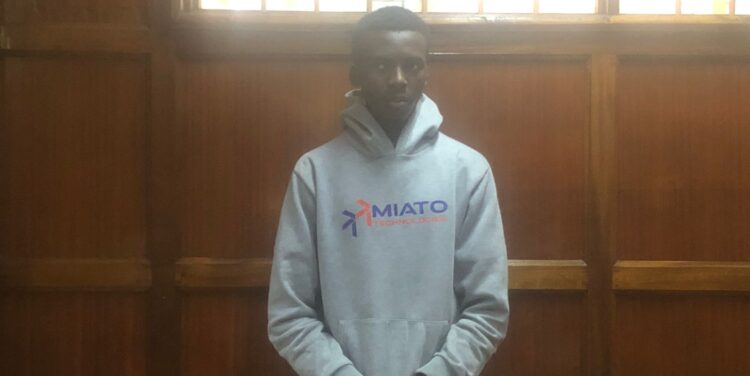The ongoing court case involving David Oaga Mokaya, a fourth-year student at Moi University, has raised serious questions about digital evidence, authorship, and freedom of expression in Kenya.
Mokaya was arrested in connection to a viral post made on November 13, 2024, on X, formerly known as Twitter. The post falsely claimed that President William Ruto had died, accompanied by an image of a funeral procession with a coffin draped in the Kenyan flag.
While the post shocked many and went viral quickly, the question of who actually authored it has become the center of debate in court.
During a recent session at the Milimani Law Courts, a forensic analyst named Boniface Machibi testified that he could not directly link Mokaya to the post.
He told the court that while there was data on Mokaya’s Samsung Galaxy A23 smartphone and his laptop that showed images, screenshots, and even profiles associated with the post, none of it could conclusively tie the student to the act of creating or posting the content.
Machibi used a forensic tool called Cellebrite UFED to examine the devices and found folders and screenshots with relevant timestamps. However, he emphasized that the evidence was linked to the devices, not directly to Mokaya as a person.
This lack of a direct connection has made the case more complicated. The defense, led by lawyers Danstan Omari and Ian Mutiso, argued that the post could have been generated using artificial intelligence or could have been satire created by someone else. They questioned whether the devices even belonged to Mokaya alone or if other people might have accessed them.
The defense also made an unusual request for President Ruto himself to testify, since he was the subject of the post. This request, along with others for evidence sharing, was supported by the Law Society of Kenya. They have also demanded access to the devices and full forensic reports, arguing that the lack of transparency is unfair to the accused.
On the other hand, the prosecution wants more data from Safaricom, hoping that additional information such as call records or IP logs might help link the post to Mokaya. They believe this will strengthen their case, especially since device evidence alone may not be enough.
Still, many in the public are unconvinced that Mokaya should be blamed. Some Kenyans have taken to social media to express support for the student, with some calling the post an example of political satire rather than criminal activity.
Others feel that the charges are part of a bigger crackdown on free speech, especially in light of last year’s protests against new taxes, where many activists were reportedly harassed or detained.
This case is not just about one student or one post. It represents a wider issue facing Kenya and many other countries, how do you handle digital speech, misinformation, and political commentary in an age of technology where AI and social media blur the lines between fact and fiction?
With the case now adjourned to September 8, 2025, and Mokaya out on a Sh50,000 bail, the outcome will be watched closely. Whatever the final verdict, it will likely shape future discussions about digital responsibility, government censorship, and the limits of expression in Kenya’s online spaces.



